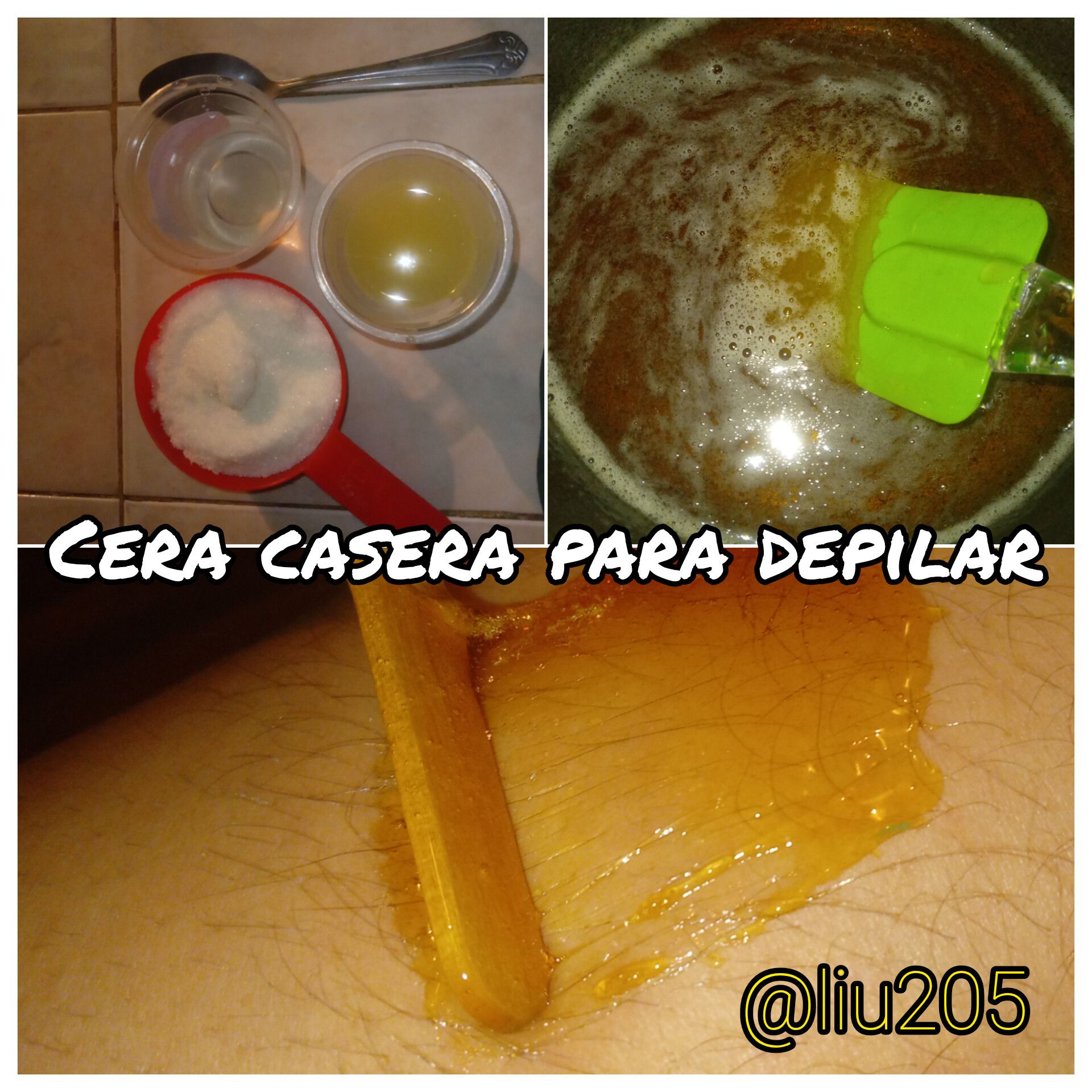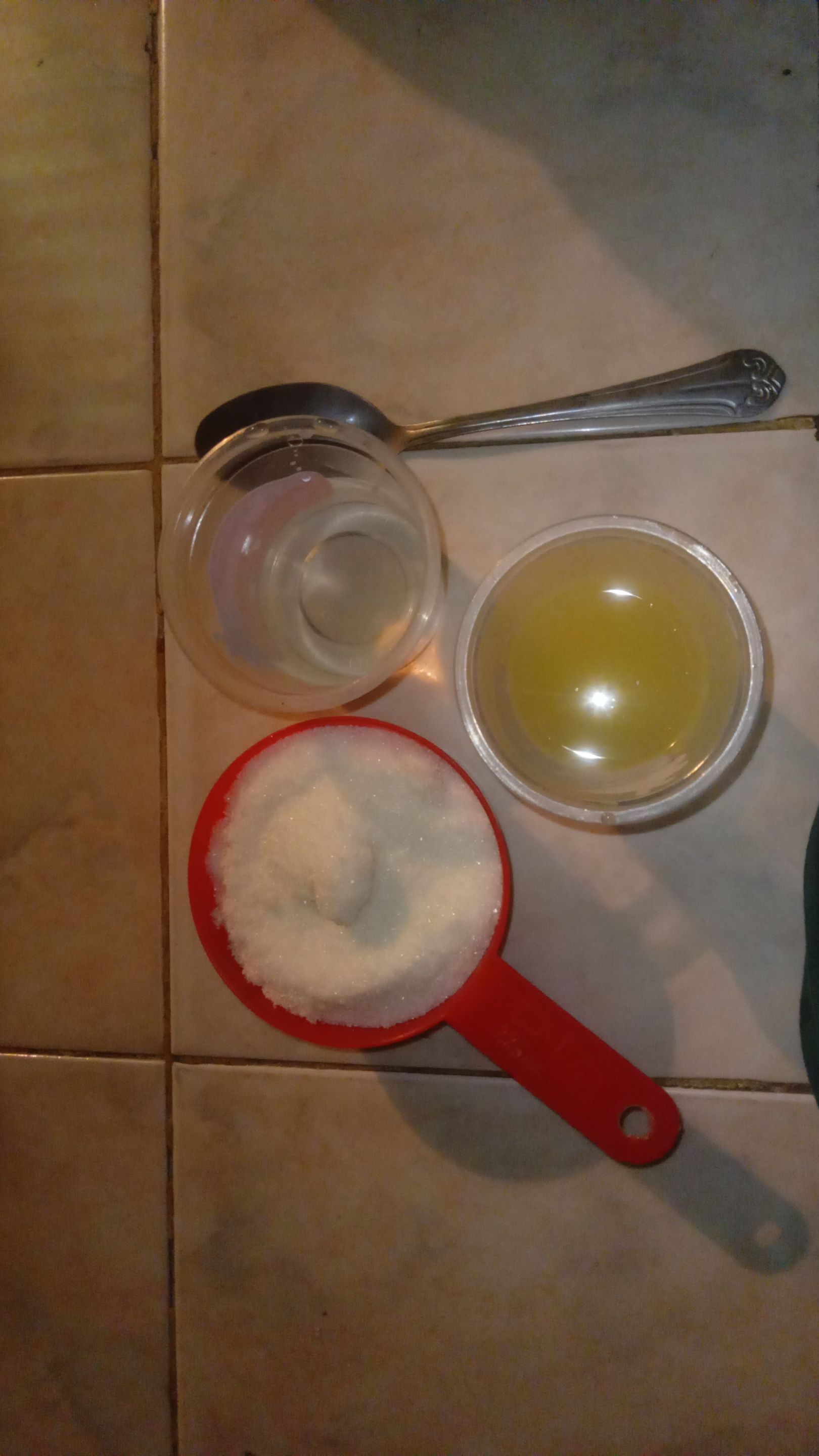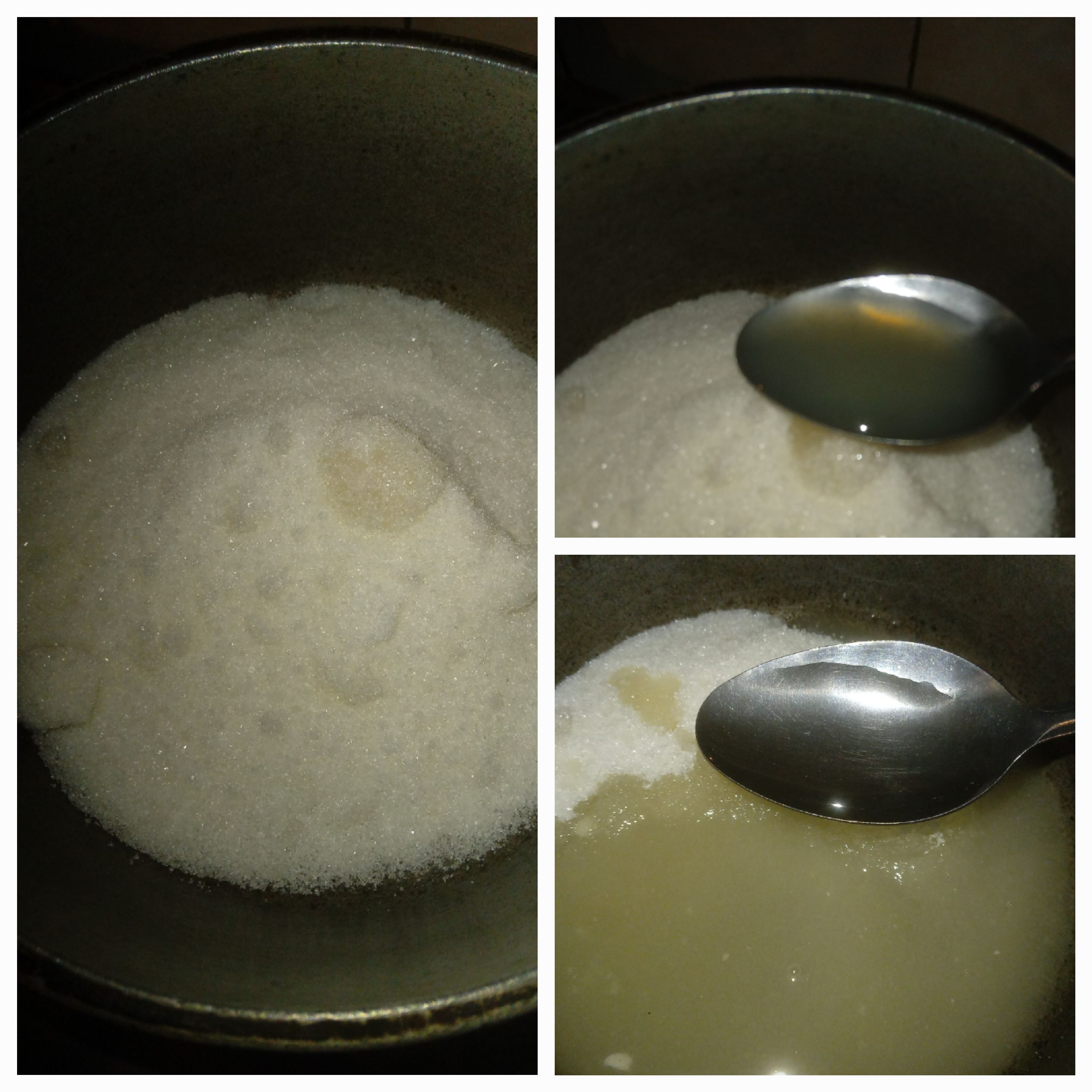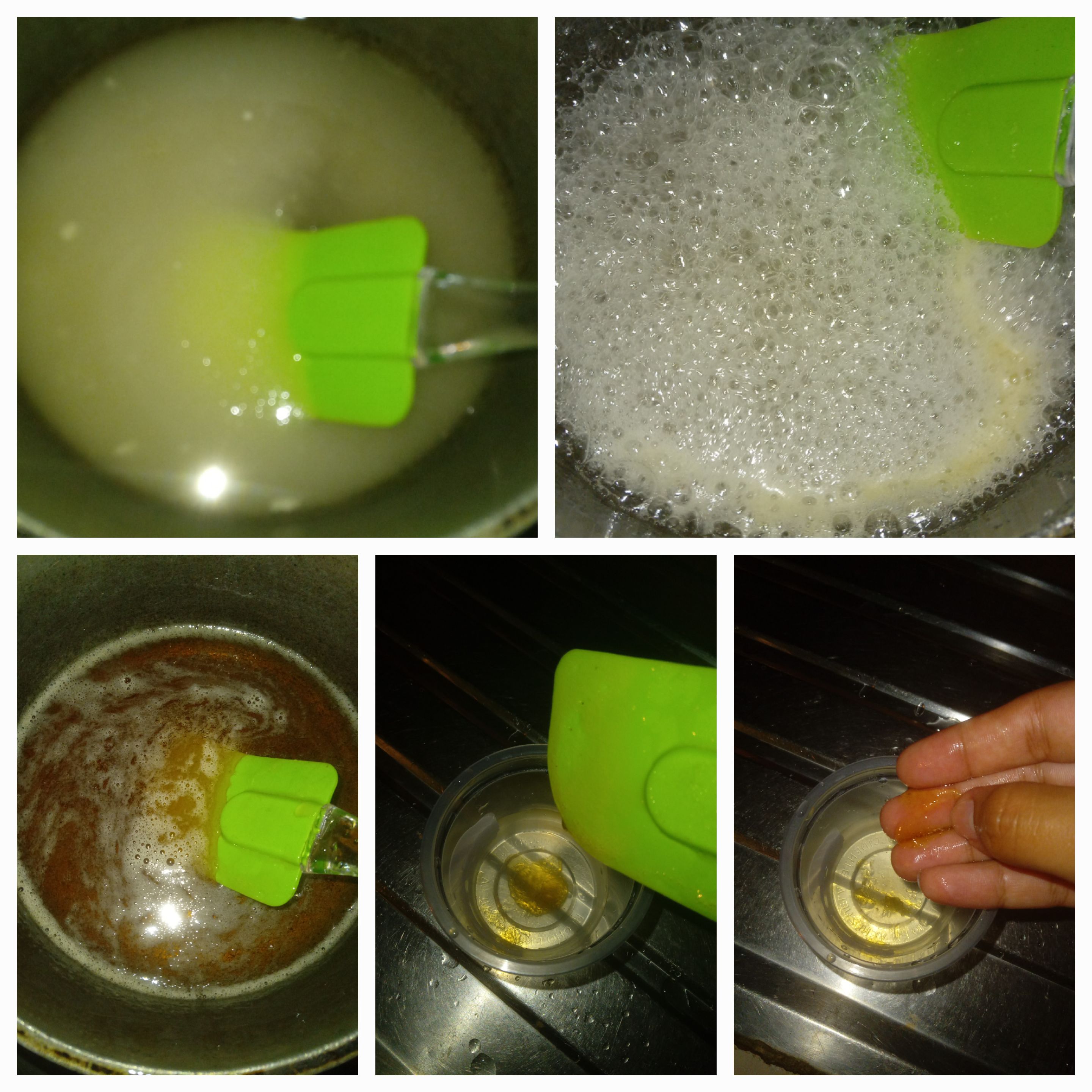We begin to cook over low heat, and as the minutes go by, we check that everything is going well. When I say "going well," I mean that it has to cook to the point where it becomes a thread a little darker than honey. Remember, it's caramel and it burns like crazy, so you have to be extremely careful when measuring the quality of the caramel.
We continue to let it cook and remove it from the heat to see what color it is. If it's not, then we return it to the heat. It must be on a very low flame because if it burns, it's useless.
Let me explain: the wax should be caramel-like in color but not in texture. It should be runny, but we expect it to be massageable when it cools. How do we know? Should we let it cool to see if it's ready or not? Well, the answer is NO. You're going to take a teaspoon of that boiling caramel and put it in a glass of cold or room-temperature water, like you'd pour honey 🍯 into a glass of water. When you pour it in, you're going to scoop out the caramel with your hand. If it's massageable and a dark golden color, it's ready. If it's dissolved in the water, it still needs to be, and if it's turned to stone, it's burned. Remember. Do this test while removing the caramel from the heat because it burns in the blink of an eye.
When everything's ready, let it sit. I transferred it to this container because it was one I bought, but it already had granulated wax on it and it got stained. Sadly, I couldn't get it off, which is why it looks that way.
We're going to apply it warm and cool, NOT HOT, because it will burn your skin. Remember, it's caramel, and that burns. Touch it to see if it can hold with your finger, and if it does, then apply. Using a small spatula, I applied it to a patch of leg hair and applied a rag to hold it in place and pull it off. The thicker the rag, the better.




